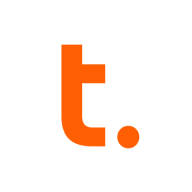

Teradata and Oracle Autonomous Data Warehouse are key players in the enterprise data warehousing category. Oracle has the upper hand due to its autonomous capabilities offering operational efficiency.
Features: Teradata is recognized for parallel processing, scalability, and efficient handling of large datasets. It offers comprehensive workload management, security features, and ease of tuning across environments. Oracle Autonomous Data Warehouse is notable for self-patching, scaling, and auto-tuning, which minimize manual management and maximize efficiency for analytics and big data processing.
Room for Improvement: Teradata is criticized for high costs and cloud adaptation challenges. Users request better unstructured data handling and improved user-friendliness. Oracle faces cost concerns and complex initial setup, with users seeking enhanced connectivity and consistent functionality.
Ease of Deployment and Customer Service: Teradata offers various deployment options, with some challenges in cloud transitions. It has robust technical support but experiences long response times. Oracle focuses mainly on cloud deployments, offering flexibility with private cloud options and receiving praise for its responsive support, though consistency in service could improve.
Pricing and ROI: Teradata is seen as costly but provides good ROI for large enterprises. Flexible licensing is available, though cost optimization is needed. Oracle's pricing is also high, but its cost efficiency through pay-as-you-go licensing and scaling adjustments potentially offsets initial expenditures. Both deliver significant value and ROI when analytics capabilities are fully utilized.
| Product | Market Share (%) |
|---|---|
| Teradata | 8.5% |
| Oracle Autonomous Data Warehouse | 5.2% |
| Other | 86.3% |


| Company Size | Count |
|---|---|
| Small Business | 7 |
| Midsize Enterprise | 1 |
| Large Enterprise | 11 |
| Company Size | Count |
|---|---|
| Small Business | 26 |
| Midsize Enterprise | 12 |
| Large Enterprise | 49 |
Oracle Autonomous Data Warehouse is the world’s first and only autonomous database optimized for analytic workloads, including data marts, data warehouses, data lakes, and data lakehouses. With Autonomous Data Warehouse, data scientists, business analysts, and nonexperts can rapidly, easily, and cost-effectively discover business insights using data of any size and type. Built for the cloud and optimized using Oracle Exadata, Autonomous Data Warehouse benefits from faster performance and, according to an IDC report (PDF), lowers operational costs by an average of 63%.
Autonomous Database provides the foundation for a data lakehouse—a modern, open architecture that enables you to store, analyze, and understand all your data. The data lakehouse combines the power and richness of data warehouses with the breadth, flexibility, and low cost of popular open source data lake technologies. Access your data lakehouse through Autonomous Database using the world's most powerful and open SQL processing engine.
Teradata is a powerful tool for handling substantial data volumes with its parallel processing architecture, supporting both cloud and on-premise environments efficiently. It offers impressive capabilities for fast query processing, data integration, and real-time reporting, making it suitable for diverse industrial applications.
Known for its robust parallel processing capabilities, Teradata effectively manages large datasets and provides adaptable deployment across cloud and on-premise setups. It enhances performance and scalability with features like advanced query tuning, workload management, and strong security. Users appreciate its ease of use and automation features which support real-time data reporting. The optimizer and intelligent partitioning help improve query speed and efficiency, while multi-temperature data management optimizes data handling.
What are the key features of Teradata?In the finance, retail, and government sectors, Teradata is employed for data warehousing, business intelligence, and analytical processing. It handles vast datasets for activities like customer behavior modeling and enterprise data integration. Supporting efficient reporting and analytics, Teradata enhances data storage and processing, whether deployed on-premise or on cloud platforms.
We monitor all Cloud Data Warehouse reviews to prevent fraudulent reviews and keep review quality high. We do not post reviews by company employees or direct competitors. We validate each review for authenticity via cross-reference with LinkedIn, and personal follow-up with the reviewer when necessary.